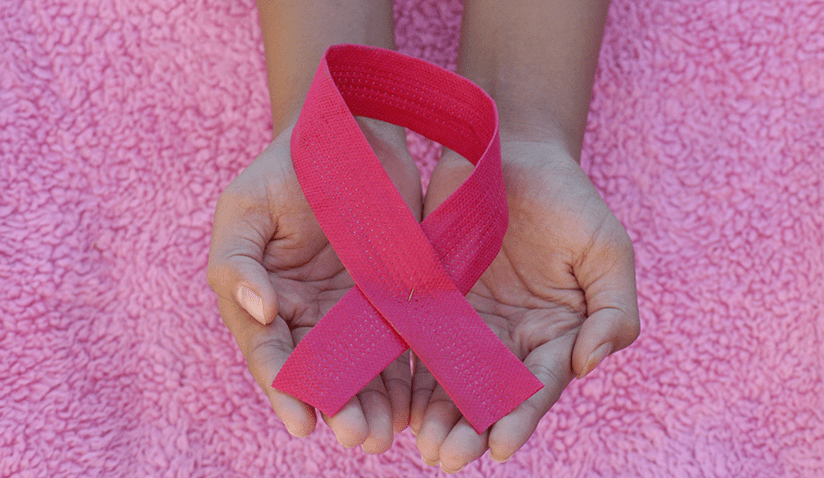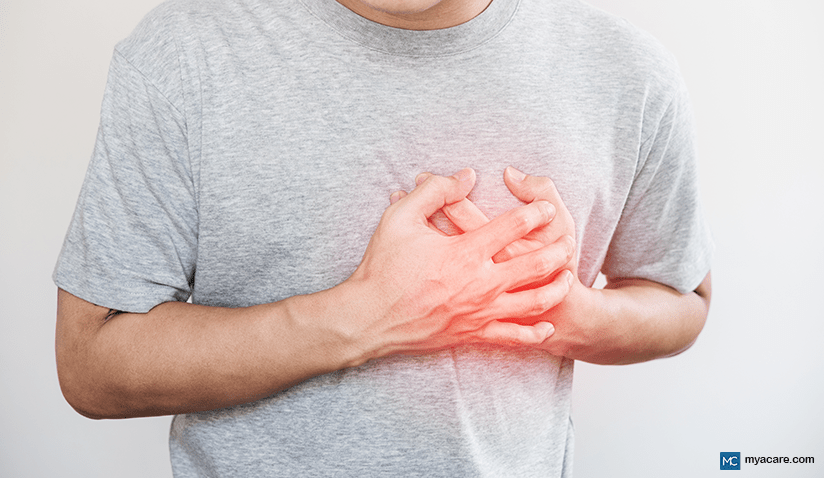WHAT TO EXPECT FROM YOUR ANNUAL MAMMOGRAM

Currently it is estimated that breast cancer is the most common type of cancer to afflict women, responsible for 12% of all female cancer cases.[1] Recent reports highlight how the incidence of breast cancer is on the rise, particularly in younger women.[2] Breast cancer prevention begins with early detection, for which mammograms are the gold standard in medical practice.
The below discussion describes everything you need to know about taking an annual mammogram, including how a mammogram works, when one should get a mammogram, how to prepare, and more.
What is a Mammogram?
A mammogram (or mammography) is a diagnostic procedure in which a specialist X-rays breast tissue in order to assess for any irregularities. It is most commonly used to screen for breast cancer, but may also be used to check for other irregularities in breast tissue or to confirm other diagnostic findings.[3]
How a Mammogram Works
Before a mammogram can take place, the doctor will ask a few questions and take a medical case history. This helps the doctor to assess your risk for breast cancer.
The mammogram itself involves the use of a special x-ray device that straps the breast down in order to take an image. Part of the device consists of two plates that compress the breast, spreading the tissue out as much as possible. Often two pictures are taken of each breast, one from the top and another from the side. For the second image, the breast is turned on its side before the x-ray is taken. The entire process can take up to 30mins on average to complete.
Your healthcare provider may need to take a follow-up mammogram before a full evaluation can take place.[4]
BI-RADS score
BI-RADS stands for Breast Imaging Reporting and Data System. It’s a classification that was developed by the American College of Radiology for evaluating the results of breast imaging. In order to generate a BI-RADS score, healthcare professionals make use of a list of descriptors that provide short details about the breasts and their density, as well as the shape, margin and density of internal breast growths, including lumps, tumors and calcifications.[5]
After taking all this information into consideration, an evaluation is drawn and the physician categorizes the breast according to a BI-RADS score. There are seven categories from 0 to 6 and each one resembles a different risk group for breast cancer[6]:
- BI-RADS 0: Incomplete. The physician is required to make additional examinations, usually making use of mammogram alternatives such as MRI or ultrasound.
- BI-RADS 1: Negative. No irregularities were found in the breast tissue.
- BI-RADS 2: Benign. Harmless growths, calcifications, fat deposits, cysts, lesions or implants were found.
- BI-RADS 3: Possibly Benign. The findings demonstrate a small (<2%) risk of cancer, requiring a follow-up confirmation scan. In order to meet BI-RADS 3 requirements, the findings will always consist of a non-compressible mass or a group of calcifications in one breast, promoting asymmetry.
- BI-RADS 4: Suspicious. An abnormality suspected to be a malignancy. This category divides into three classifications: a) 2-10% chance of malignancy; b) 10-50% chance; c) 50-95% chance.
- BI-RADS 5: Highest Risk. The chance of malignancy is higher than 95%. The physician will deploy a test to confirm the results. If cancer is negative, surgical intervention may still be recommended to remove the irregularity.
- BI-RADS 6: Proven Malignancy. This category is assigned to the imaging results of those with breast irregularities, who have already received a breast cancer diagnosis.
Annual Breast Screening: When Should I Get a Breast Exam?
Breast cancer is commonly diagnosed after the age of 50[7]. Screening for breast cancer during one’s 40s may reduce the risk of mortality in one’s 50s by up to 25%.[8]
Yearly screening is advised to start for women aged 45-54. For this age group, annual screening was shown to be more effective at detecting breast cancer early on than biennial or non-annual screening.[9]
Women aged 40-44, who are at a high risk of breast cancer or who display signs (see below), ought to consider annual screening. In women who have a family history of breast cancer, screening should begin 10 years prior to the age of the youngest relative that developed the condition.
Screening is not advised for those under the age of 30, yet women ought to have a risk assessment by the age of 30 to know when they should start screening.[10]
Experts advise women older than 55 to screen every one to two years[11]. The benefit of screening declines later on in life, with studies showing little to no difference between women over the age of 70 who screened annually and those that did not.[12]
Signs of Breast Cancer
Having any of the below signs may indicate breast cancer and warrant immediate investigation[13]:
- Any change in the shape or size of either breast.
- Breast pain.
- Inversion or inward pulling of the nipple.
- Breast lumps or lumps under the arms.
- Thickening or swelling of an area on the breast.
- Breast skin irritation or dimpling.
- Abnormal nipple discharge, including blood.
Regular Mammogram vs. Digital Tomosynthesis
The film mammogram is the most commonly employed type of mammogram, where the result is a photographic image developed from film. A specialist may be able to do a digital mammogram in order to better consolidate information[14], depending on the equipment they have available.
One of the drawbacks of conventional mammograms is that they don’t always capture all of the breast tissue. Breasts consist of glands, fibrous tissues, and fat. Glands and connective fibers in the breast that overlap can prevent accurate imaging. Some women have a larger amount of these tissues, reducing the quality of a film mammography. These are referred to as dense breasts. Breasts can become denser as a woman ages. Dense breasts also increase the risk for acquiring breast cancer.[15]
Since the advent of these two types of mammogram, other mammograms have been developed in order to assess breast health. Digital 3D tomosynthesis takes x-ray snapshots of different layers of the breast, creating a 3D representation. They are often employed for menopausal women, those with denser breasts, and women with breast cancer. While the accuracy is greater than a regular mammogram[16], so is the price.
Pre-Mammogram Considerations
The following points should be taken into account before going for a mammogram[17]:
- Mammographers are almost always female.
- The process is often a painful and uncomfortable one that may mildly damage the breasts. One may also feel fatigued afterwards.
- A mammogram should not be carried out the week before or during menstruation.
- The mammographer needs to be informed of any breast-related symptoms prior to the procedure in order to minimize potential complications.
- It’s best to bring any previous mammogram results to the consultation so the physician can compare them against the current results.
- Spray-on deodorant, talc powder or other similar items should not be applied prior to a mammogram as they may interfere with imaging.
- Wearing a dress is not advisable as your top will need to be removed for the procedure.
- Piercings and jewelry needs to be removed beforehand.
- Medical staff are usually trained to lessen discomfort and provide support to the patient.
- If in distress or extreme pain, one may stop the procedure at any time.
What to Watch Out For
A mammogram has known limitations. Watch out for the below mammogram pitfalls:
- Over-diagnosis. While mammograms often detect breast cancer early on, over 20% of women receiving them are over-diagnosed. Some studies indicate that as many as 30-50% of mammogram-detected cancers are misdiagnosed as being more advanced than they truly are.[18] Over-diagnosis usually leads to over-treatment, which can bear negative consequences for the patient.
- Under-Diagnosis. Mammograms can also miss abnormalities in the case of dense breasts. Dense breasts have more glandular tissues that overlap and prevent a thorough analysis. A mammogram won’t detect breast cancer and other lumps that are deeply embedded in dense breast tissue. Digital mammograms are more accurate at screening in women with denser breasts.
Is a Mammogram Safe?
A mammogram compresses each breast and exposes them to a small dose of ionizing radiation.
As the American Cancer Society explains, everyone is exposed to sources of both natural and manmade radiation on a daily basis, referred to as background radiation. One mammogram can expose the patient to about 7 week’s worth of background radiation in one shot.[19] This is the main reason why it is not recommended to pregnant or breastfeeding mothers, as well as those who are proven to be at an extremely high risk for contracting breast cancer.
Healthcare professionals advocate the use of mammograms as the benefit is likely to outweigh the risks involved. Studies support this notion, revealing that annual mammograms improve early cancer detection and have helped to lower breast cancer-related mortalities.
Mammogram Complications
While mammography complications are rarely reported, they typically revolve around excessive breast compression. As a result, bruising, small lesions, internal bleeding, pain and discomfort may occur a few days after. The risk of complication increases with inadequate imaging and the need to perform multiple successive examinations.[20]
Who Shouldn’t Have a Mammogram?
A mammogram is not necessary or suitable for the following individuals:
- Pregnant or breast-feeding mothers.
- Those with very dense breasts, breast lumps, frequent pain, abnormal lactation and other irregularities. An MRI or ultrasound may be used to assess these patients who still require ongoing screening.
- Post-menopausal women older than 70.
- Women under the age of 30; or under the age of 40 who are not at a high risk (e.g. breast cancer does not run in the family, free of other reproductive disorders, etc).
- Individuals that have been vaccinated against COVID-19 in the last 6 weeks. The shot may promote lymph swelling and ruin the results.[21]
Mammogram Alternatives
There are currently two alternatives to conventional mammography and tomosynthesis:
- Ultrasonography
Ultrasound breast imaging is a less invasive form of mammography that makes use of sound in order to generate a very accurate digital image. An amplification gel is applied to both breasts before a handheld ultrasound device is used to take the reading. The high-frequency sound emitted by the device echoes throughout the breast, building a picture of the breast tissue based off of the reverberations that return. Fat mass can be separated from other tissues due to the intensity of the echo.[22]
This form is preferred for its less invasive approach and the fact that it does not rely on radiation. A physician is also able to assess bloodflow to and from the breast with ultrasound.
Ultrasound does not tend to pick up on calcifications as effectively as a conventional mammogram and is not often available. Healthcare providers do not usually use ultrasound exams in order to replace a mammography and it may not be covered by insurance policies.
- Magnetic Resonance Imaging (MRI)
An MRI makes use of a magnetic pulse and radio waves in order to generate a very accurate image of any tissue. Breast imaging MRI scanners are different to normal MRI devices, known as MRI’s with dedicated breast coils[23]. Depending on the type of MRI, one may be required to receive an injection of a radioactive substance such as gadolinium, which is more easily readable by the MRI scanner.
This diagnostic tool is preferable for mammography as it is less invasive and can build an accurate 3D image of the breast tissue. It may be employed stand-alone for high-risk women or in conjunction with a standard mammography for enhanced accuracy.
An MRI breast evaluation may not be affordable and is not always available in medical facilities. Women with claustrophobia or metal implants should not opt for a breast MRI.
Conclusion
Detecting breast cancer early on has been proven to reduce the risk of mortality. It is recommended that every woman between the ages of 45 and 54 undergo annual breast cancer screening.
Mammograms are designed to help the physician to screen and diagnose breast cancer; as well as to keep track of abnormalities. The process may cause pain, discomfort and bruising. Alternatives to conventional mammography may be used for women who require additional screening or who are at a high risk. These include ultrasound, MRI and tomosynthesis.
Sana Hospital Group is one of the largest independent healthcare providers in Germany. With over 50 world-class hospitals and more than 2 million patients yearly, Sana operates leading facilities, among them university hospitals, tertiary care centers, and specialized hospitals to deliver a broad portfolio of top-tier medical care. Whether it is preventive health care, an acute or chronic illness, a planned procedure, or a long-term diagnosis - more than 600 chief physicians, 4,500 medical professionals, and 11,000 nursing staff provide excellent treatment options, world-class medicine, and the best possible medical care.
Source:
- [1] https://www.breastcancer.org/symptoms/understand_bc/statistics
- [2] https://www.ncbi.nlm.nih.gov/pmc/articles/PMC7950292/
- [3] https://www.mayoclinic.org/tests-procedures/mammogram/about/pac-20384806
- [4] https://www.cdc.gov/cancer/breast/basic_info/mammograms.htm
- [5] https://www.ncbi.nlm.nih.gov/books/NBK459169/
- [6] https://radiopaedia.org/articles/breast-imaging-reporting-and-data-system-bi-rads
- [7] https://www.cdc.gov/cancer/breast/basic_info/risk_factors.htm
- [8] https://pubmed.ncbi.nlm.nih.gov/33141657/
- [9] https://pubmed.ncbi.nlm.nih.gov/33955776/
- [10] https://www.ncbi.nlm.nih.gov/books/NBK559310/
- [11] https://www.cancer.org/healthy/find-cancer-early/american-cancer-society-guidelines-for-the-early-detection-of-cancer.html
- [12] https://pubmed.ncbi.nlm.nih.gov/32092767/
- [13] https://www.cdc.gov/cancer/breast/basic_info/symptoms.htm
- [14] https://www.health.harvard.edu/newsletter_article/digital_mammography_better_for_some_women
- [15] https://www.ncbi.nlm.nih.gov/pmc/articles/PMC3097746/
- [16] https://ascopost.com/news/march-2020/digital-breast-tomosynthesis-vs-digital-mammography-outcomes-comparison-over-5-years/
- [17] https://www.nhs.uk/conditions/breast-screening-mammogram/what-happens-at-your-breast-screening-appointment/
- [18] https://pubmed.ncbi.nlm.nih.gov/29272783/
- [19] https://www.cancer.org/cancer/breast-cancer/screening-tests-and-early-detection/mammograms/mammogram-basics.html
- [20] https://www.ncbi.nlm.nih.gov/books/NBK559310/
- [21] https://healthblog.uofmhealth.org/wellness-prevention/covid-vaccines-and-mammograms-what-you-need-to-know-about-timing-your-imaging
- [22] https://www.radiologyinfo.org/en/info/breastus
- [23] https://www.cancer.org/cancer/breast-cancer/screening-tests-and-early-detection/breast-mri-scans.html
Disclaimer: Please note that Mya Care does not provide medical advice, diagnosis, or treatment. The information provided is not intended to replace the care or advice of a qualified health care professional. The views expressed are personal views of the author and do not necessarily reflect the opinion of Mya Care. Always consult your doctor for all diagnoses, treatments, and cures for any diseases or conditions, as well as before changing your health care regimen. Do not reproduce, copy, reformat, publish, distribute, upload, post, transmit, transfer in any manner or sell any of the materials in this blog without prior written permission from myacare.com.



